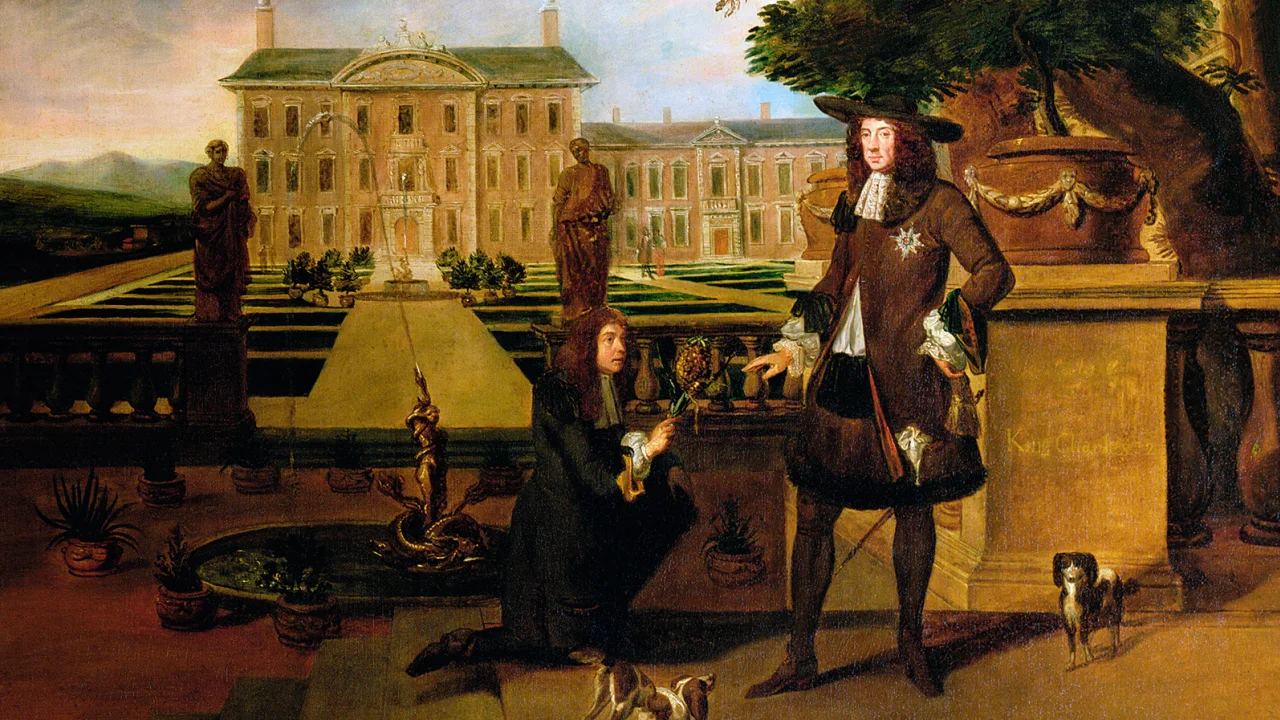Before Gucci Handbag, in a 1675 painting, King Charles II of England is offered a peculiar gift by the royal gardener on a terrace. This gift, imported from a distant land, epitomized luxury and prestige during that era. What was this coveted item that held such allure? Surprisingly, it was a simple pineapple—the fruit that would embark on a historical journey to become an unparalleled symbol of opulence, particularly in Britain. Even today, pineapples continue to grace the summits of St. Paul’s Cathedral, an iconic landmark in London.
A Fruit from Faraway Lands
This painting, commissioned by King Charles II and attributed to Dutch Artist Hendrick Danckert’s, became as soon as believed to commemorate the primary pineapple grown in England. However, it wasn’t until later that pineapples were successfully cultivated in the country. The pineapple presented to Charles II was actually shipped from Barbados. Explorers who encountered the fruit in the New World praised its delectable taste, leading to its immediate popularity and demand.
Pineapples: A Symbol of Wealth and Status
The appeal of pineapples prolonged even to British North America, wherein a younger George Washington expressed admiration for the fruit at some point of a go to to Barbados in 1751. As pineapples were not mentioned in ancient texts, they lacked established cultural significance. Consequently, the English could attribute any meaning to them, and thus, the pineapple ascended as the “king of fruits” in British society.
The English Quest for Homegrown Delicacies
Although pineapples required high temperatures and years to mature, their desirability led to cultivation attempts in Britain. By the 1770s, the upper echelons of society considered it essential to grow their own pineapples. It is turning into a status symbol. However, this endeavor was challenging and expensive, as it necessitated the construction of special greenhouses called “pineries” and elaborate heating methods. The cost of producing a single pineapple amounted to a staggering 80 pounds, equivalent to around $15,000 in today’s currency.
Pineapples: Admired but Seldom Consumed
Ironically, despite their popularity, pineapples were seldom consumed, especially among the affluent. Affluent individuals often sent pineapples as prestigious gifts, displaying them prominently on dining room tables as status symbols. Eating a pineapple was considered akin to eating a luxurious item like a Gucci handbag. So great was the desire to be seen with a pineapple that rentals of the fruit for social events were not uncommon.
Pineapples as a Symbol of Elegance
As the pineapple’s reputation soared, it began out to seem in diverse designs, which include structure and crockery. The fruit’s natural decorative qualities and simple symmetrical shape made it a favorite for stylization. The aristocracy used the pineapple as a means to communicate their values, with stone pineapple sculptures adorning gateposts as symbols of Georgian gentility. These enduring pineapples can still be found across Britain and in buildings associated with royalty.
The Changing Tides of Pineapple Luxury
Around 1820, the import of pineapples in large quantities diminished their status as the ultimate luxury. By 1850, a astonishing 200,000 pineapples had been being unloaded on London’s dockside annually. With the arrival of refrigeration and canning later withinside the century, pineapples have become extensively available. Despite their widespread availability, the allure of the pineapple persisted, as seen in Charles Dickens’ “David Copperfield” from 1850.Even for younger David. A pineapple represented a glimpse right into a global of impossible opulence.
Conclusion:
Before Gucci Handbag, the journey of the pineapple from a rare and exotic delicacy to a symbol of wealth. The status in Britain is a fascinating tale. From its introduction to the court of King Charles II to becoming a staple of British culture, the pineapple’s allure endured through the ages. Today, while no longer a pinnacle of luxury, the pineapple continues to be cherished and enjoyed by people worldwide. It is reminding us of its remarkable historical significance.

